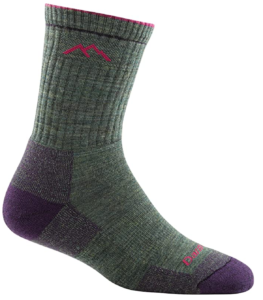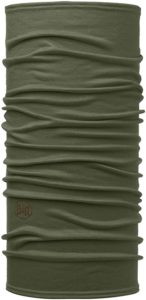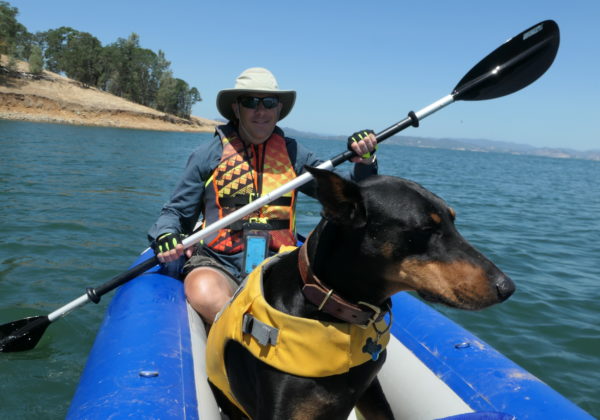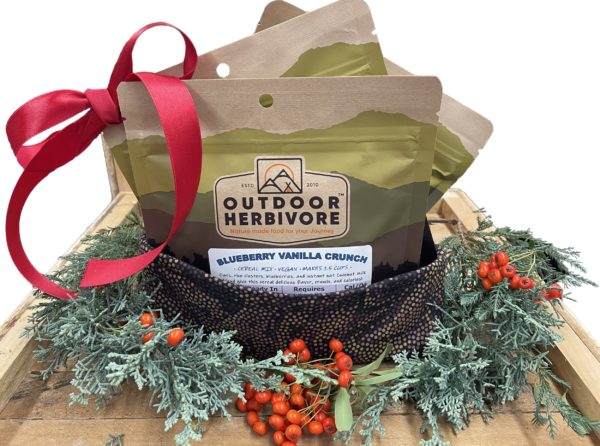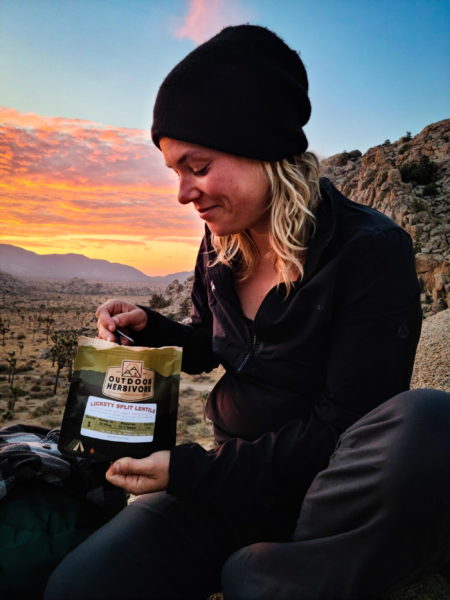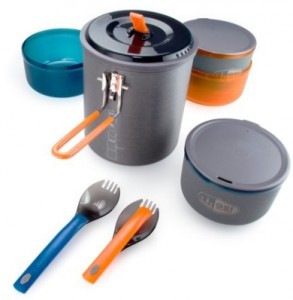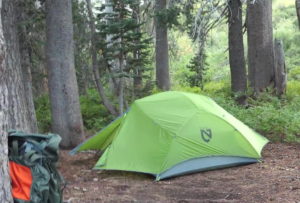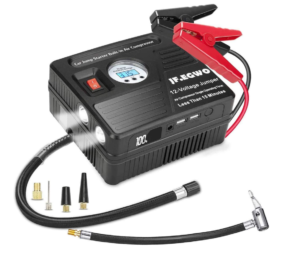Looking for gifts ideas for the outdoor explorer on your list? These are a collection of products that the folks at Outdoor Herbivore recommend for backpacking, cycling, and paddling.

Socks and Hats
Socks, shoes, and clothing are the main items that backpackers wear out or need to replace often. Of those items, socks and hats are easiest for gifting, and both are necessary for staying comfortable outdoors.
Socks – Opt for wool or blended wool/polyester socks, which have sweat-wicking properties. Darn Tough is known for producing long-lasting hiking socks with exceptional durability.
Hats – For colder months, fleece or wool hats are ideal. In sunnier months, a packable 360-degree brim hat like the vented Tilly LTM6 sun hat is a great choice. Buffwear, a versatile tubular liner, serves as a helmet liner, sweat wicker, neck warmer, bandana, face mask, and U.V. protection, making it a practical and cost-effective option.
It’s best to steer clear of dark colors when choosing your outdoor gear, as they are more likely to attract mosquitoes.
Wicking Base Layers
If you decide to purchase clothing, you can’t go wrong with gifting a synthetic wicking base layer designed to regulate body heat. Look for clothing made of synthetic materials, such as polyester, designed to keep hikers dry while working up a sweat. The best fabrics are soft, lightweight, and moisture-wicking. Avoid 100% cotton because it doesn’t pack down or wick away moisture. For more information on the types of fabrics recommended, see this article. Marmot, Patagonia, and Arc’teryx are clothing brands we recommend.
Water Purification Device
We recommend a more durable water purification device for frequent backpackers, such as the Steripen. Our Steripen has been purifying backcountry water for over 10 years!
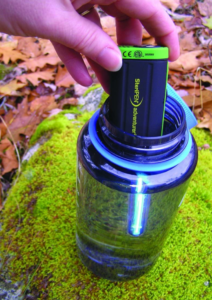
For a minimal investment, LifeStraw is a good bet. This award-winning design surpasses EPA standards for water filters. LifeStraw microfiltration membrane removes 99.99% of waterborne bacteria (including E. coli and
salmonella) and 99.99% of waterborne parasites (including giardia and cryptosporidium). It does not remove viruses. Each straw can filter up to 4,000 liters (1,000 gallons) of water in its lifetime and comes with a storage bag to keep it clean while in transit. The LifeStraw Go Water Bottle is another option for those who need a water bottle with a built-in filter.
LifeStraw products are economical for international travel and short trips.
Waterproof Phone Case
You can lose your footing when crossing a river, and there is always the possibility of a sudden rainstorm. Phones are an expensive investment, and the last thing you want to do is have them get water damage while on the trail. Cases such as these keep gadgets dry when hiking or kayaking. Multiple case sizes are available. The Kona cases keep our phones bone dry on all our paddling excursions.
Trail Coffee
If you like supporting a smaller company that makes excellent instant coffee, give Outdoor Herbivore a try. This coffee hits the spot on the trail! Made from 100% Columbian freeze-dried coffee beans, the ground fully dissolves in hot and cold water, eliminating coffee ground waste. The entire pouch will make 14+ cups of 8 oz. of dark roast coffee (depending on desired strength), making it ideal for coffee lovers or sharing. It costs less than 60 cents per cup and is more economical than corresponding quality stick packs. Enjoy a rich, balanced flavor with delightful chocolatey notes.
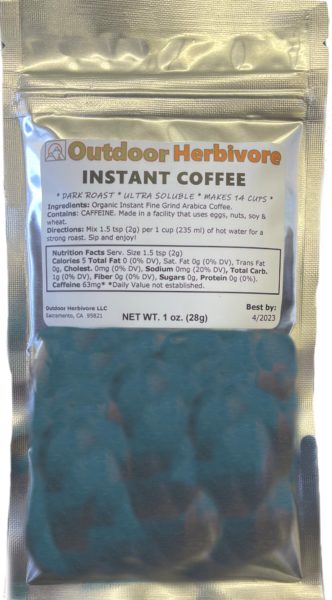 | 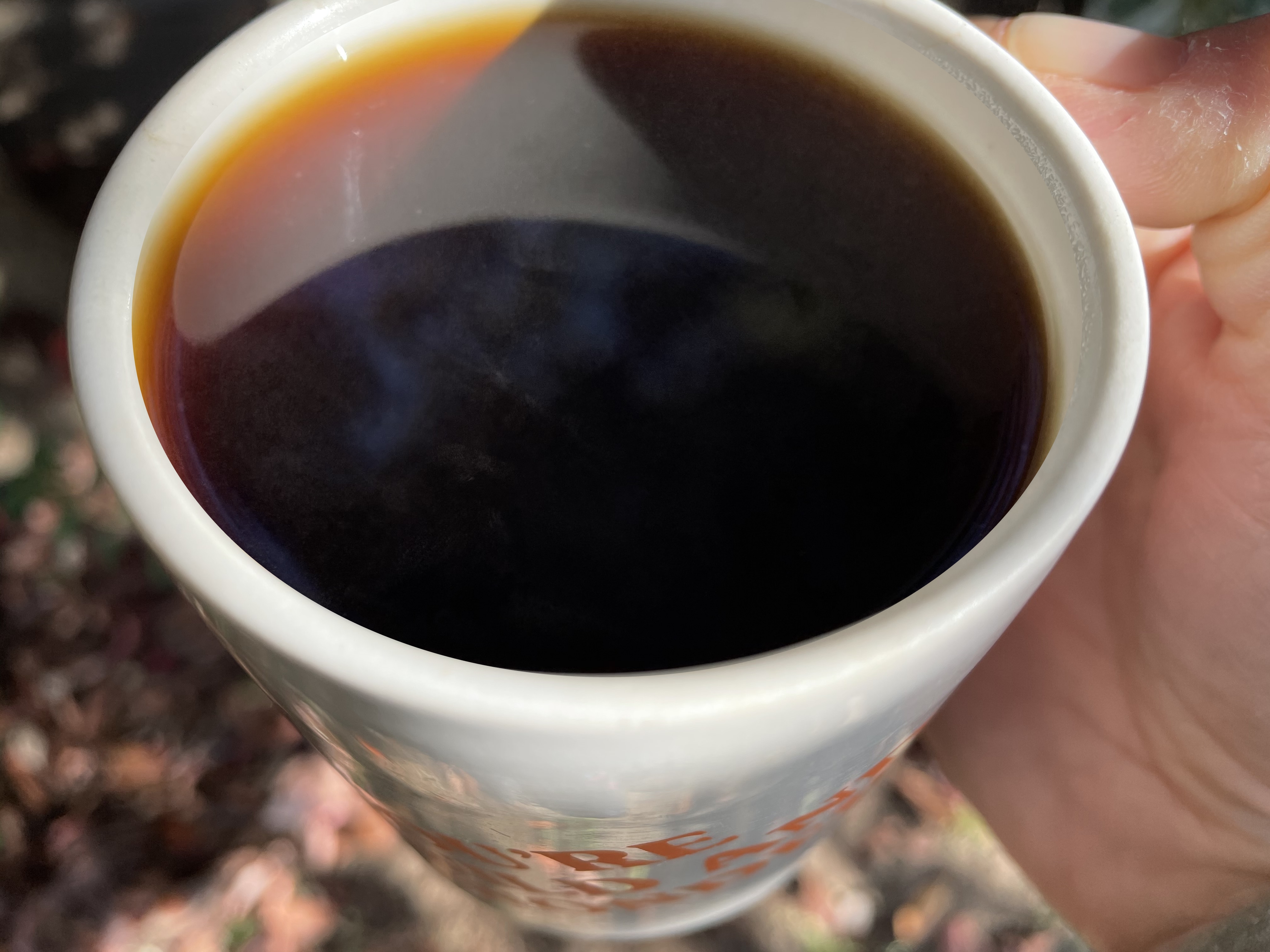 |
If you prefer individual stick packets that make a single cup of coffee, we recommend Alpine Start.
Trail Food
Everyone needs to eat, and who doesn’t appreciate delicious backpacking food made from natural ingredients? Outdoor Herbivore provides a wide selection of dried meals and trail snacks made with organic whole foods and vegetarian ingredients. You can also find meals packaged in holiday boxes and gift certificates available at Outdoor Herbivore.
Bearz Pocket Blanket
When folded up, this blanket fits into your pocket and can comfortably seat 2-3 people when unfolded. It can also be used as a tarp, ground cover for a tent, or rainfly. It is also puncture-resistant, waterproof, and dirt-proof. Weighing in at .5 lb, it is likely too heavy for backpacking but would serve well for day adventures or bikepacking.
Food Dehydrator & Trail Recipes
If they enjoy making their own backpacking food, consider getting a dehydrator and a recipe book specifically for trail food. The best dehydrators have a fan in the back and an integrated shut-off timer. We’ve been using Excalibur for over a decade and highly recommend this brand. The 5 or 10 tray Excalibur models with a timer are great options for home use. Alternatively, an air fryer may be a better choice than a standalone dehydrator. Additionally, check out our heat-safe backpacking food pouches designed for storing dried food and rehydrating with hot water while on the trail.
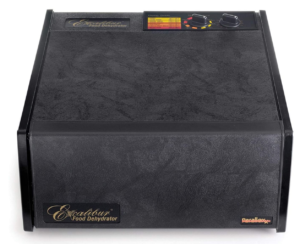 |  |
Backpacking Stove & Cookware
Canister backpacking stoves are popular because they boil water fast, take up little space, and are lightweight. A few downsides to canister stoves include no fuel gauge, canister disposal (can be recycled if taken home and punctured), no simmer capability, and finicky performance in cold weather. Despite the cons, canister stoves, such as the MSR PocketRocket 2, are among the most popular stoves among thru-hikers. While this stove is cheaper, you must keep purchasing new canisters because they can’t be refilled once empty. This adds significant operating expenses over time. If that bothers you, consider a refillable multi-fuel stove such as the MSR DragonFly or WhisperLite Universal. Either one can burn several types of liquid fuels such as kerosene, white gas, and unleaded automotive gas. The Whisperlite Universal has the added advantage of accommodating a canister.
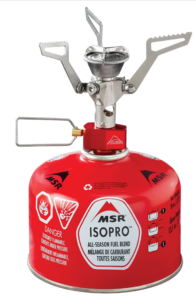
We like the GSI Halulite series for cookware, a nesting set that comes with everything you need for cooking. We’ve owned the GSI Haulite Microdualist set for several years, and it has held up wonderfully over hundreds of uses.
Bear Canister for Backpacking Food
Regulations regarding approved bear storage containers for backpacking vary between parks and forests. Most USA parks require rigid plastic bear canisters like the BearVault and Garcia Bear Cache.
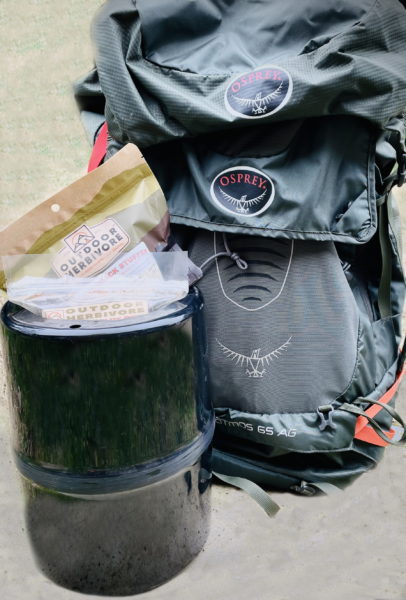
If bear storage is optional and you prefer not to carry a rigid container, consider using the lightweight Ursack Bear Food Bag. This bag is bear-resistant and critter-proof, with an included cord for hanging. However, keep in mind that the U.S. National Park Service does not recognize these bags as bear-approved for food storage. Additionally, they will not protect your food from being crushed by a bear if it finds it.
Trekking Poles
Do you know someone that suffers from bad knees or is a bit clumsy on the trail? Trekking poles help to stabilize and absorb shock. If you have weak knees, hips, or ankles, look for poles with an internal spring for shock absorption. Black Diamond and Leki are the major brands for trekking poles.
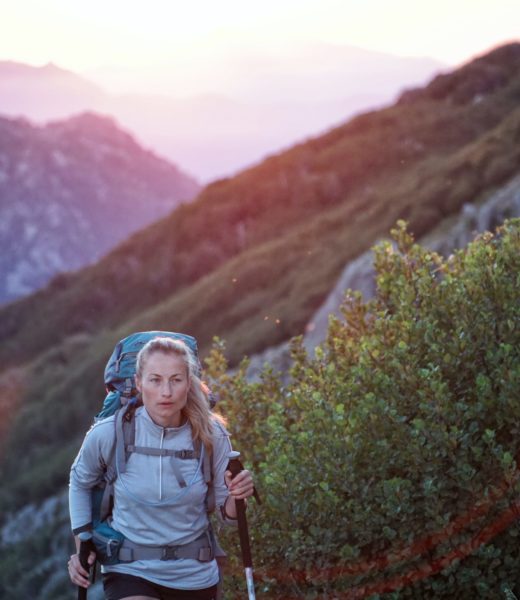
Charging system for Electronics
For charging cameras and smartphones on shorter backpacking trips (about 3 days), all you need is a portable USB external battery that you fully charge before leaving. For week-long trips, we recommend the more powerful PowerCore 20100.
Solar energy is another option for charging multiple electronic devices during longer trips. Look for foldable panels with at least one USB port with the highest amperage to meet your device’s power requirements. Some panels include an integrated battery, which may be useful for storing power when there is sunlight, and charging devices when resting at night or waiting out a rainstorm. Keep in mind that the battery will add more weight, and many are of poor quality; however, this technology is getting better each day. For more information on choosing a suitable solar charger, see this article by Outdoor Gear Lab.
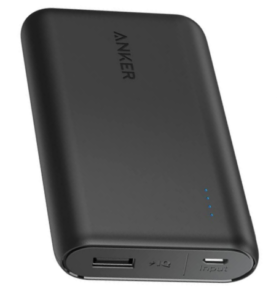
Camera Accessories
If you want to take photos in difficult areas, we highly recommend the ultralight and portable tripod called the Gorrilapod. The Joby Gorillapod
Do they carry a GoPro camera? Many backpackers take video with these cameras because they are designed for rugged use in the outdoors. If they have a GoPro camera, consider getting a starter accessory kit. Ensure the kit includes a chest mount to capture hikes from a first-person perspective while leaving the hands free. We do not recommend selfie sticks as they can become a distraction, especially in treacherous areas.
Maps and Guide Books

Phone Apps – FarOut (Guthook) and Gaia GPS are two navigational phone apps widely used among U.S. hikers. Gaia GPS is highly regarded among backpackers for route planning and offers a range of map layers including USGS topographic maps and satellite images. Get them a phone gift card (iTunes or google play) to download their chosen app.
Although digital maps are standard for researching and planning a hike, a paperback guide or physical map is fun to flip through for inspiration and planning. Some hikers prefer fold-up maps for primary navigation. You can order popular topographical wilderness maps and guidebooks from stores such as REI. Make sure you get maps that are printed on plastic laminated paper, which is waterproof and tear-resistant. USFS paper maps produced by the US Forest Service (USFS) are highly accurate when hiking the national forests. In cases where USFS maps do not exist or are outdated, Trails Illustrated maps by National Geographic is a suitable alternative. Tom Harrison’s topographic maps for hiking areas in the state of California are also good. These maps are also available on the Avenza app.
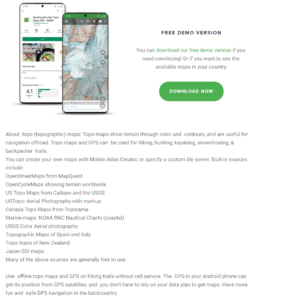
Shelter
Tents must be updated every few years with heavy use. Although the materials keep getting lighter, they also aren’t as durable. We’ve been a fan of Nemo tents since 2009 and this is all we use. Nemo tents are comfortable, lightweight, and hold up to frequent use. MSR is another good brand for backpacking tents.
Hammocks also make a great gift. Nylon offers the best strength and durability. An integrated bug net is also nice. ENO and Hennessy are two favorite brands among backpackers.
Rechargeable Batteries
Not the most exciting gift, but AAA, A.A., and lithium-ion batteries are always needed for various outdoor gadgets. For rechargeable batteries, we like the Eneloop charger system. Any rechargeable batteries will do, but we have found that Amazon Basics batteries seem to last the longest.
Backcountry Waste
Human waste is a growing environmental concern on the trail. Make sure hikers know the correct methods of waste disposal by getting them a lightweight trowel and bidet. Read here for more information about using a bidet when backpacking.
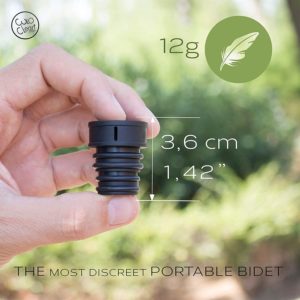
Not ready for a bidet? Pair a trowel with travel toilet paper and biodegradable soap, or hand sanitizer. 
Annual Pass to Forests and Parks
The inter-agency pass America the Beautiful Annual Pass provides entry to more than 2,000 recreation areas for exploration. Areas include those managed by the Bureau of Land Management, Bureau of Reclamation, Fish and Wildlife Service, USDA Forest Service, and the National Park Service. Hike primarily in the Pacific Northwest? Be sure to check out the N.W. regional forest pass. Southern California also has an annual park pass.
Emergency Car Kit
If you worry about getting stranded in a remote area due to a discharged battery or a flat tire, a multifunction auto jump start and tire inflator can save you. It has allowed us to pump up a flat tire at a remote trailhead so we could drive 40 miles to the nearest town. Fortunately, we have not had to test it on a dead battery.
Plant Trees
This year was a bad year for forest fires on the U.S. west coast. What can you do to help? Give your loved ones the gift of trees to help restore National Forests damaged by wildfire, insects, and disease. For every $1 you give, the National Forest Foundation will plant a tree. National Forest Foundation is a nonprofit partner of the U.S. Forest Service to care for 193-million spectacular acres of wildlands;
Make a Charitable Donation
Donate to a nonprofit instead of buying a commercial gift. It may not look as festive as a gift-wrapped package, but the impact will go further. Give to a cause that conserves land, protects the environment, or keeps trails maintained, such as –
- Appalachian Trail Conservancy, dedicated to the conservation of the 2,175-mile Appalachian Trail, extending from Maine to Georgia;
- Rails-to-Trails Conservancy (RTC) is a nonprofit organization that creates a nationwide network of bicycle trails from former rail lines.
- Pacific Crest Trail Association ensures that the trail will be preserved and maintained.
- Sierra Club, America’s oldest grassroots environmental organization, founded by John Muir;
- The Conservation Fund acquires and protects landscapes valued for recreation, wildlife habitat, and history;
- The Nature Conservancy, a worldwide organization that protects ecologically important lands and waters across the globe.
Gift Certificates
Hikers/backpackers tend to be particular about the gear they carry, so you can’t go wrong with purchasing a gift card from a local outdoor retailer. Not sure where they buy gear? Popular online gear retailers include REI.com, Backcountry.com, Moosejaw, and Eastern Mountain Sports. Outdoor Herbivore also carries gift certificates.
Disclaimer
When researching backpacking gear gifts online, be skeptical of the review source. Many “top gear lists” contain links to commission sites by people paid to write product reviews after a brief backyard test, which is clearly not a valuable representation. Furthermore, many credible bloggers also link to affiliate sites. You can find reliable sources quickly based on the quality of the content and site history. Purchase gear from these sites to support their hard work. We use all of the products mentioned in this post and feel confident in recommending them to you.
Happy Holidays!
